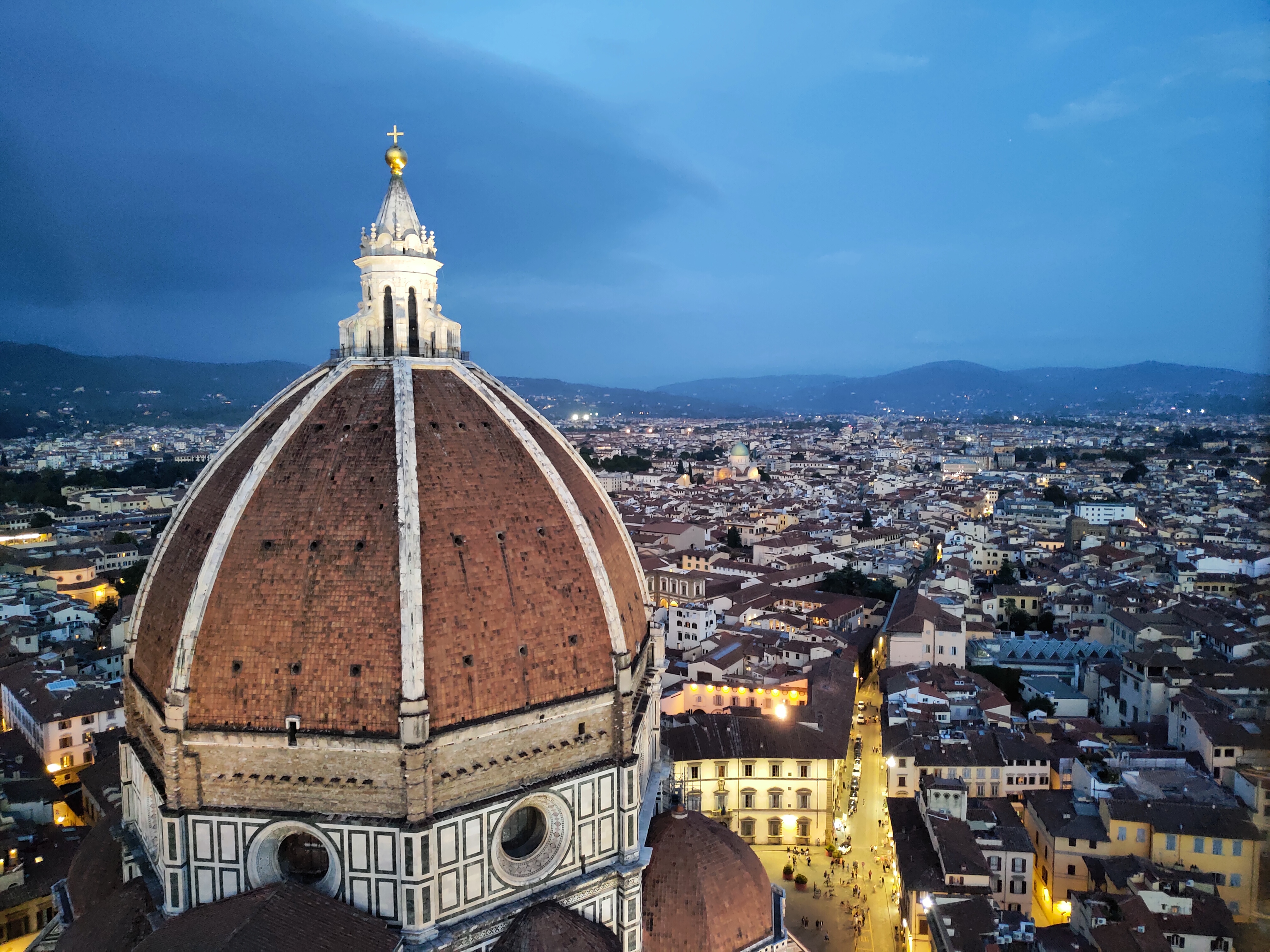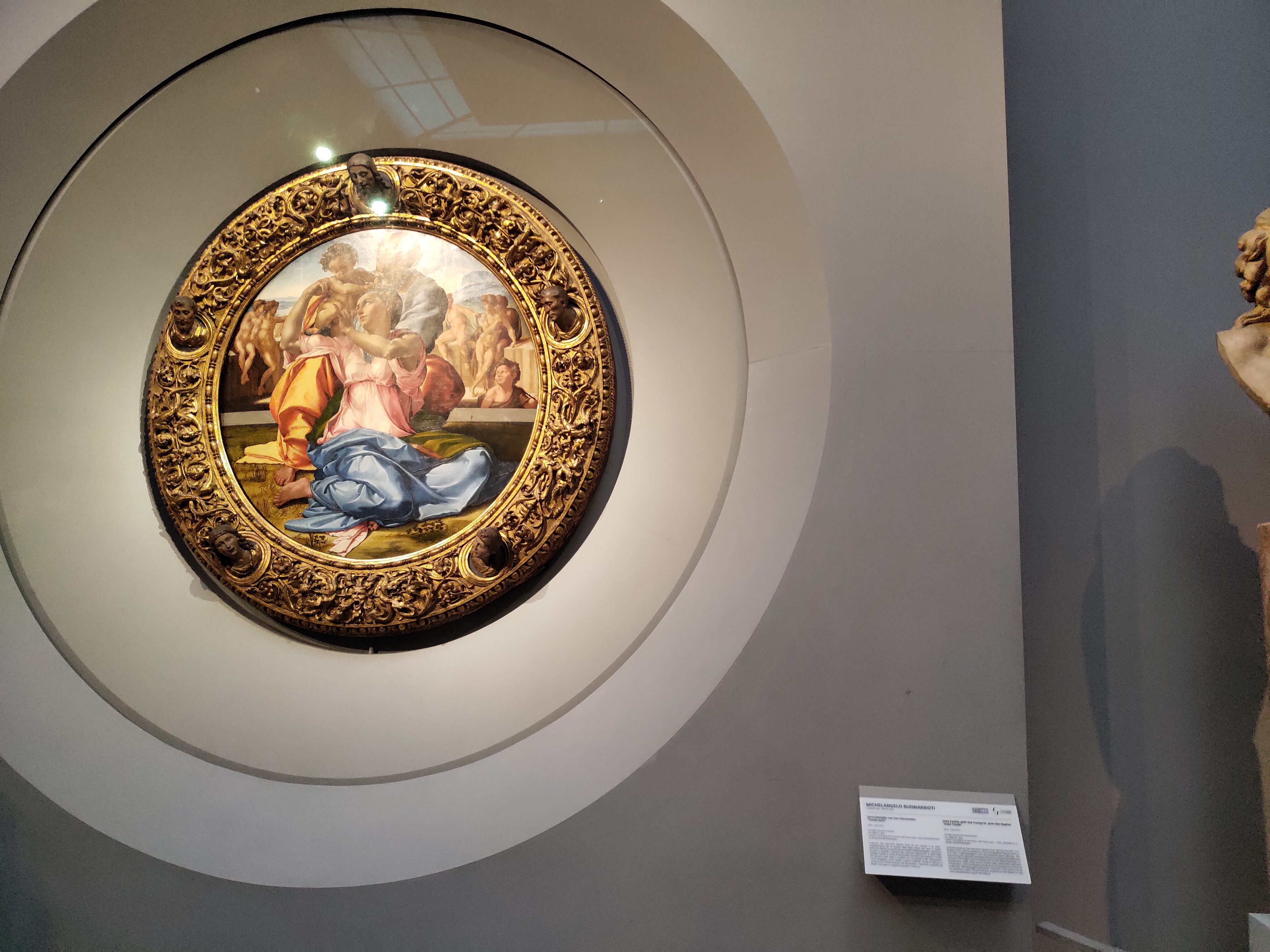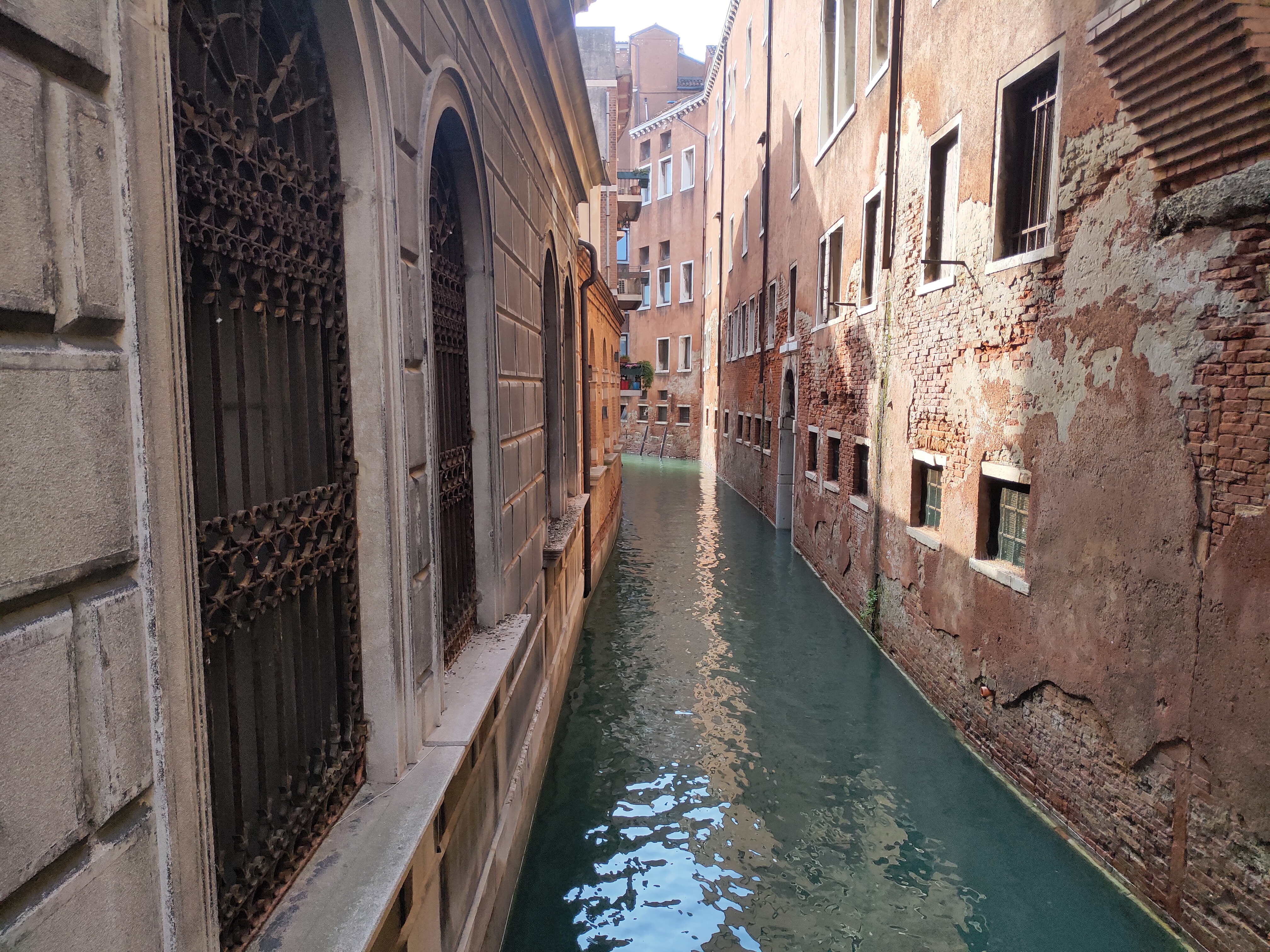Central Europe 2022 - Journey into the Renaissance from Firenze to Venezia
Firenze


Uffizi museum is among the biggest and most important museums in Florence. It has an amazingly extensive, almost overwhelming, collection of artworks, ranging continuously from late Medieval (12-13th century) to late Renaissance (17-18th century). It is one of the few museums that exhibits paintings from all three of the trinity of great masters of Renaissance, i.e. Raphael Sanzio, Michelangelo and Leonardo Da Vinci. The most popular among these exhibits, however, are the masterpieces of Sandro Botticelli, which appear on their frontpages, posters and tickets.
The huge collection and the masterpieces are well arranged through curating efforts, in general chronologically. The representative paintings from the late Medieval to early Renaissance form a remarkable continuum, where the audience can see clearly the continuous but rapid change taking place in the world of art within the short two centuries. At the beginning of tour one still has the Medieval gold painting on wood depicting Saint Francis kneeling on the ground, receiving the stigmata from a crucified figure in the sky, along with numerous Madonna-and-child themed paintings, where the child seems rather a king trapped in a child’s body overlooking his subjects, with gestures signaling his unnatural divinity. Through the tour, however, the depiction of Madonna and the young Jesus changes drastically, and in the 14th century emerges paintings where, without the holy aura, Madonna and the young Jesus may have passed for any ordinary pair of mother and child. The humanity and vitality injected into the paintings are remarkable, and when one sees the early renaissance paintings, best represented by Botticelli’s works, the stiffness and stereotyped depiction that were prevalent mere two centuries ago are now gone for good.


In addition to Botticelli’s masterpieces like Spring (Primavera) and The Birth of Venus, Uffizi also exhibits some works by Raphael Sanzio, Leonardo Da Vinci, as well as Michelangelo. Although high renaissance artists are generally very apt with depicting human bodies, none of them are close to the level of Michelangelo. The state of the muscles and the pose of Madonna in his Don Tondo are so full of strength and trends of motion; I suspect they require mastery of sculpture, as possessed by Michelangelo, to introduce such athletic sketches into paintings.
Venezia
I parted with Lu and JMY after our visit to Uffizi museum. They hurried to catch their train back to Milano, and then to Zürich, whereas I continued my journey eastwards. I took the train from Firenze to Bologna, stopping at Prato for an afternoon croissant, and then headed Venice. The train from Bologna to Venice was quite full, but I managed to find a seat. At around eight I arrived at Venezia Mestre, had a quick bite at the train station, and checked in my first hostel. The hostel is only three minutes walk from the train station. It had a very good vibe, and the girl at reception informed me of a music bingo event that evening, which made me regret my short stay there. Nevertheless, I proceeded to the room as I expected to set out early for a day trip on the island before leaving for Ljubljana.
Two others were in the room as I entered: a young man slightly older than me, and a girl slightly younger than me. They claimed to be brother and sister from southern England, who were in Italy for their vacation. Some parts of our itineraries are the same: yes, they also just came from Firenze; and yes, they were just having the conversation on the incredible number of tourists in Firenze at this time of the year. But they had also been to Napoli (“uh, I mean, we don’t mean to say the city is not good; the visit to Pompeii was really worth it”), and they were planning to go to Milano afterwards. They were also visiting Switzerland after Milano, Bern to be specific, and we had a pleasant chat about what Switzerland is like and whether you can fit Bern into a day trip. It was quite unusual that tourists specifically headed for Bern, as was pointed out by Lu, but it turns out that they were actually aiming for Interlaken, which made much more sense.
The next morning I set out at 9 for Venezia Santa Lucia. There were trains connecting Mestre and Santa Lucia almost every five minutes, and the trip took only ten minutes. The bay area was covered in a thin mist, shadowing the island with a melancholy look. Once I got on the island, however, the melancholy was quickly diminished by the scale of the train station (one wouldn’t even expect such a large train station on an island, unless he sees for himself) and the large crowds. The main road along the canal was crowded with tourists, speaking different languages, and finding their way through queues for boat tours. The boat ticket, even for the public transportation boats, was quite expensive. The famous Gondolas were more so, as I watched on the bridge some passengers handing the gondolier the money at the end of the ride before stepping off the boat. As a day traveller with a few places in mind, I decided to set off on foot through the lanes on the island.

One of my intended visits were the works of the Venetian architect, Carlo Scarpa. It was unfortunate that I visited on Monday, and the Olivetti centre was closed to visitors, along with some other museums. However, I did pay a visit to IUAV, whose entrance was designed by Scarpa. The entrance is hidden between several buidings, and was almost unnoticed by tourists. Inside the entrance there is a tiny garden and a rectangular pond, which, although intended to be filled with water, was empty during my visit. It seemed whoever responsible for the maintenance did not particularly care for Scarpa’s legacy. I did enjoy my visit at IUAV, though. There is an atrium at the end of the entrance hallway, with benches, a vending machine and a small coffee shop. With the fast eduroam network, it is a perfect place to sit down, take a break and decide where to go next.
Similar to Firenze, Venezia is also an important city in Renaissance. The major landmarks, such as Basilica di Santa Maria Gloriosa dei Frari, and the adjacent Scuola Grande di San Rocco (School of San Rocco), are home to masterpieces of Venetian school masters, Titian and Tintoretto, respectively. The Scuola Grande di San Rocco exhibits a large number of Tintoretto’s splendid wall and celing paintings, and has the extra merit of being an architectural attraction as well. The basilica has a smaller collection, but masterpieces such as Assunta and Pesaro Madonna by Titian make it well worth a visit. It also has amazing documentaries on the preservation and restoration of the paintings. There was a stall to the south of the Basilica for delicious Calzones. According to the reviews they also had good gelato, but I didn’t try.

